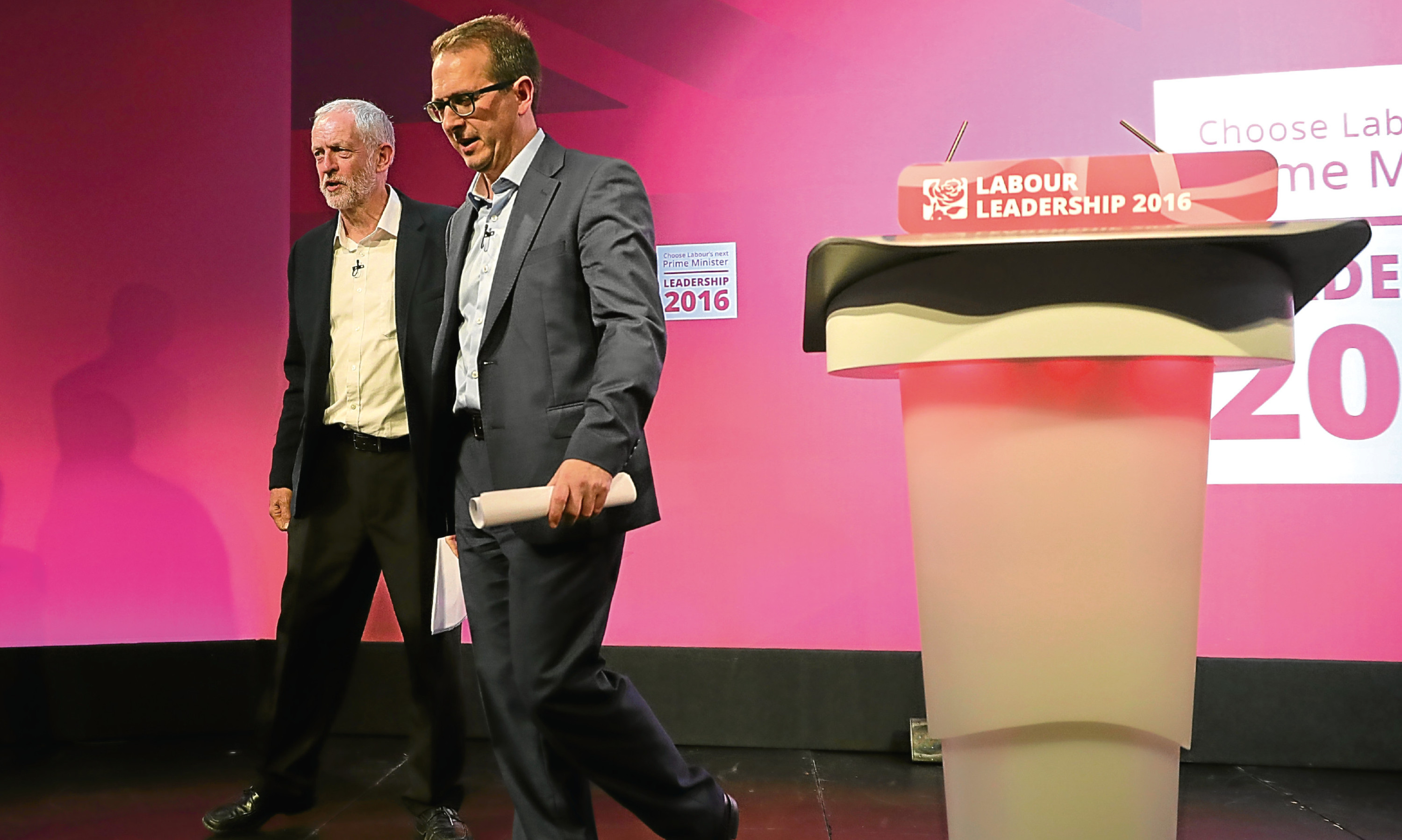Tonight in Glasgow Jeremy Corbyn and Owen Smith will debate, pitching their claims for the leadership of the Labour Party.
Locals complain at this time of year of over-confident people turning up in Edinburgh to put on obscure shows – and Glaswegians may feel the same about the hustings.
The overwhelming sensation of the ongoing spat in the UK Labour Party is how remote it feels.
To write that would once have been inconceivable – the Independent Labour Party was first led by the Scotsman Keir Hardie and dominated late 20th Century politics in this land.
Now it appears like a student revue show, where the audience claps more out of embarrassment than praise.
The back story runs thus – one of those towering Scottish labour figures who used to be so common, Gordon Brown, lost a UK general election in 2010.
To most people’s surprise, it was Ed Miliband, not his brother David, who then took over the leadership.
This was the beginning of a backlash against the centrist politics of the Blair era and the banal careerism it fostered.
Ed Miliband then lost a general election in 2015 – not badly in England and Wales but catastrophically in Scotland.
In part, he may have lost because English voters didn’t like the idea of Scotland, in the form of the SNP, somehow controlling Labour if it won power.
Miliband quit and in the following leadership contest, Jeremy Corbyn came from rank outsider to victor – beating Andy Burnham, Yvette Cooper and Liz Kendall by a landslide.
So the revolt against Blairism seemed victorious but key figures such as Len McCluskey of the TUC let it be known that Corbyn was a two-year fix until an election-winning candidate could be found.
However, the old New Labourites couldn’t stomach more than one year and took the Brexit result as a cue to revolt by quitting en masse from the Shadow Cabinet.
The dissidents were a mix of people angered at Corbyn’s management – Angela Eagle, for example, was infuriated at the way her sister, Maria, was treated by the Labour leader over a disagreement on Trident renewal – while others had not come into politics to discuss ideology but to go along with the neo-liberal flow. However, nobody figured on Jeremy Corbyn just not going – a tactic to oust him by general lack of support failed because he didn’t seem much bothered.
Immune to some social sense of propriety about quitting, he felt that with a huge personal mandate from party members it was the dissidents who were exposed as gatecrashers to a party that didn’t want them.
Angela Eagle battled tears and announced, in an unfortunately weak voice, that she would challenge Corbyn.
Then Owen Smith emerged from obscurity.
His first move was to declare he was just as left as Corbyn but had a Blairite wardrobe.
However, against the undoubted authenticity of Corbyn, he came across as a fake.
Owen Smith is a political hologram, both there and not there, visible but see-through and it is no surprise that early returns from the ballot which began this week show he is destined to disappear altogether as Corbyn marches back to victory.
The first article in the Labour Party constitution says: “This organisation shall be known as ‘The Labour Party’. Its purpose is to organise and maintain in Parliament and in the country a political Labour Party.”
Which neatly sums up the dilemma – Corbyn and his supporters seem more interested in maintaining a Labour Party in the country, while opponents care more for the Parliament – by which they mean government.
Presumably, Corbyn imagines he can win a general election but strangely, he never speaks of such ambitions.
Meanwhile, moderate Labour MPs scour the parliamentary rule book to see if they could declare as a new entity and be recognised as the official opposition – a shot too long to be credible.
Instead, it appears the movement must split between an ideological Labour Party under Corbyn and a moderate, centrist grouping with an uphill task of getting elected to Parliament under a new name and with no money.
Despite this operatic incompetence from all involved being heavily influenced by the loss of 50 Scottish MPs, its not clear what Scotland gains.
The leader of the Scottish Labour Party, Kezia Dugdale, has seized the opportunity to do nothing.
She clings to the wreckage of the UK party when it can be doing Scottish Labour’s chances no good.
Bizarrely, Kezia has endorsed Owen Smith, even as he fades from political reality.
Yet a split Labour movement means more years of a Tory UK government and no social democratic opposition to the SNP’s incoherent conservatism.
Scotland needs the left to sort itself out and develop a cogent position on the status of the common weal in a globalised world.
This performance feels like a rehearsal, among characters unsure of their purpose.
